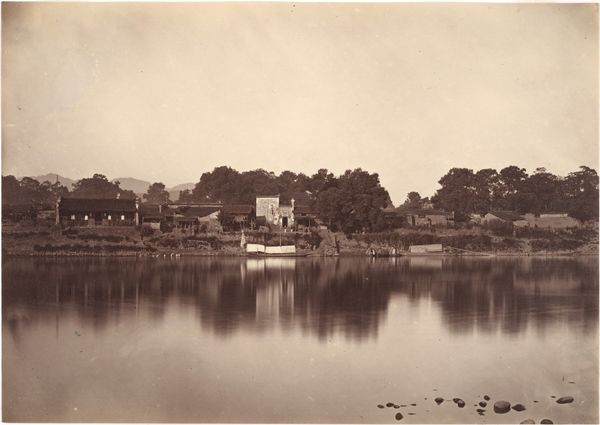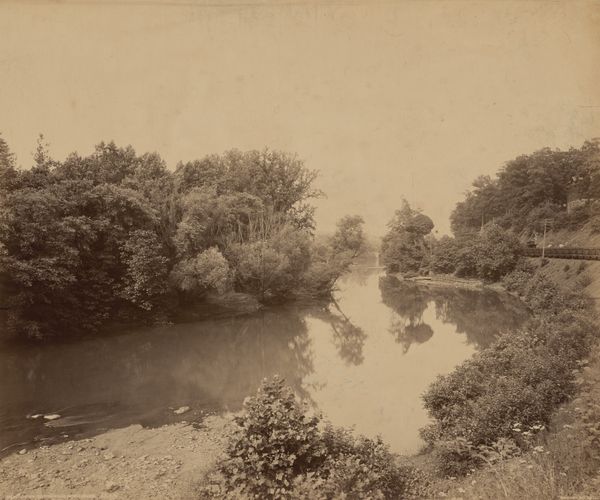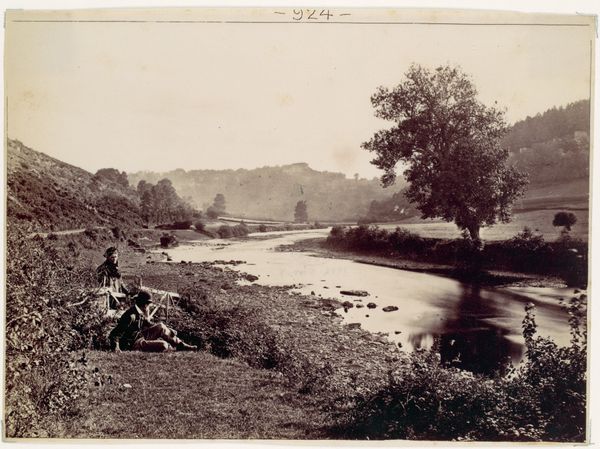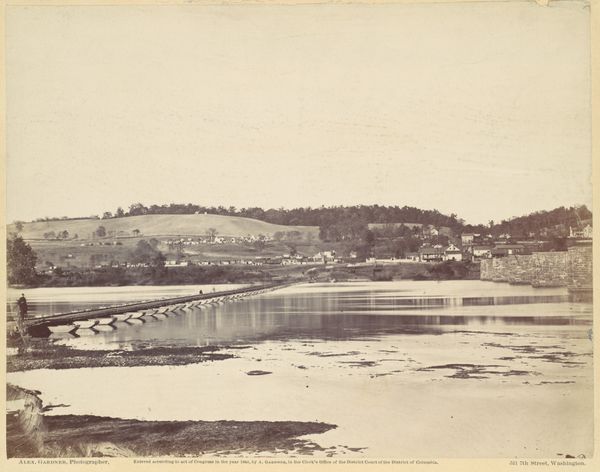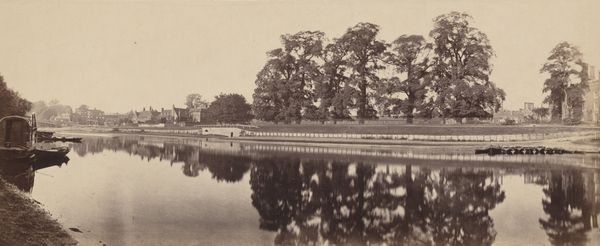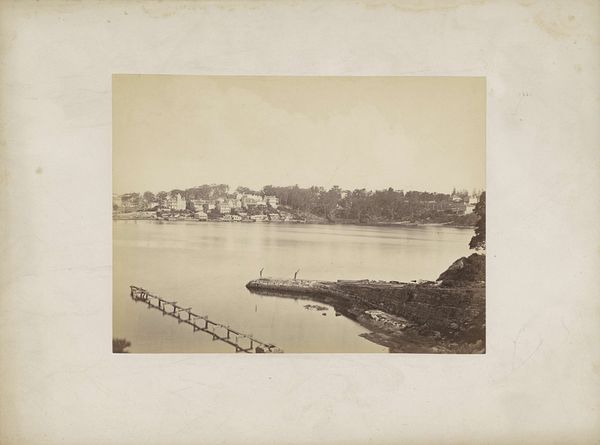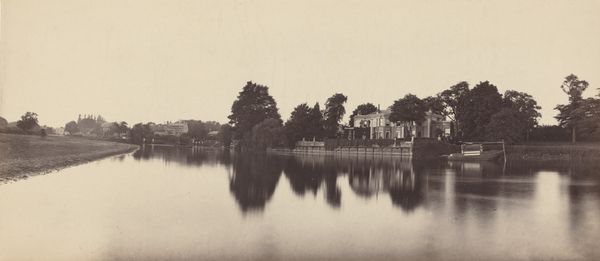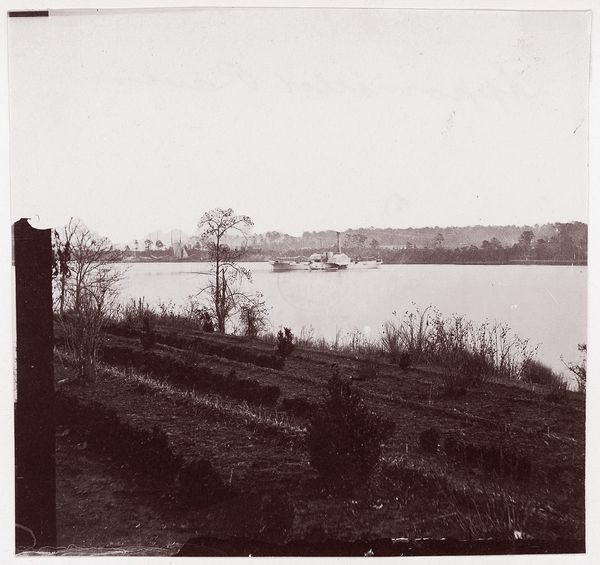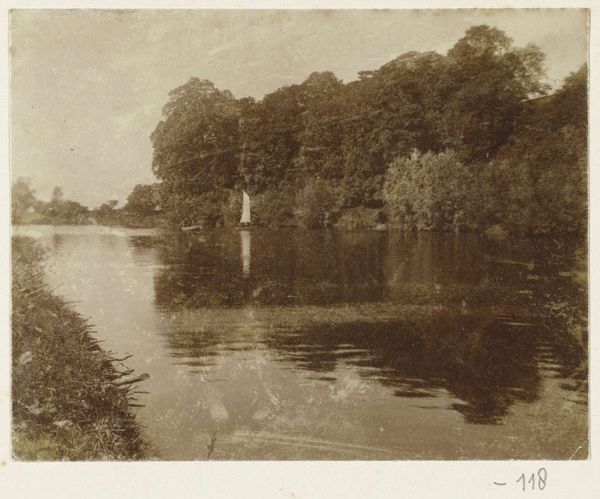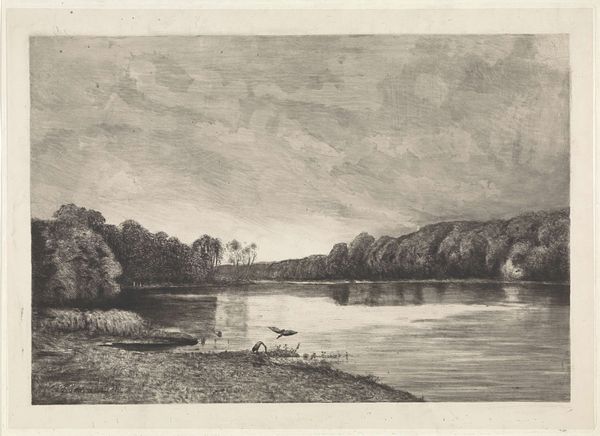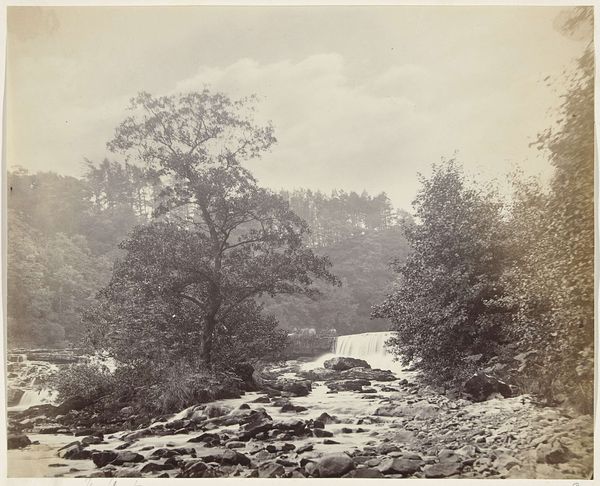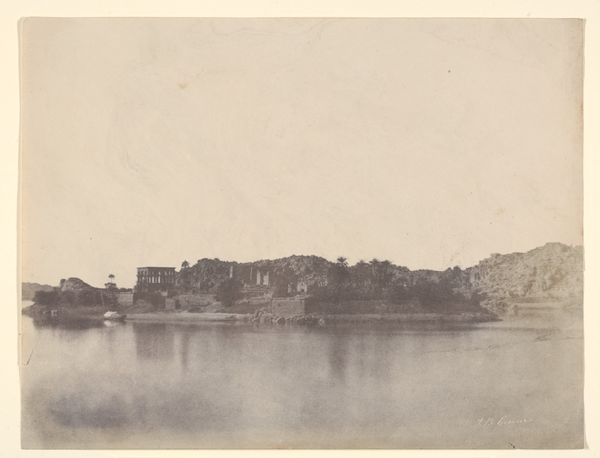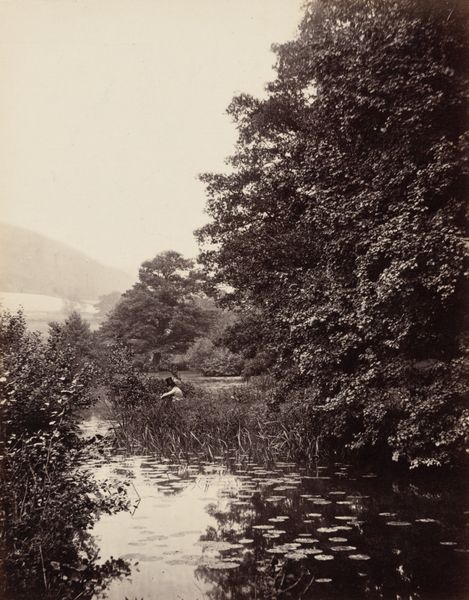
#
scenic
#
cloudy
#
countryside
#
outdoor scenery
#
monochrome photography
#
19th century
#
fog
#
shape of cloud
#
scenic spot
#
shadow overcast
Dimensions: image/sheet: 11.9 × 27.5 cm (4 11/16 × 10 13/16 in.) mount: 30.6 × 38.4 cm (12 1/16 × 15 1/8 in.)
Copyright: National Gallery of Art: CC0 1.0
Victor Albert Prout made this albumen silver print, "New Lock, Hurley," in the mid-19th century. The image shows a wide expanse of river, a lock stretching across the water, and figures in a boat and on the shore. Photography in this era was a slow, deliberate process. The wet collodion process, which was most likely used here, involved coating a glass plate with chemicals, exposing it in the camera while still wet, and then developing it immediately. The final print was then made on albumen paper, coated with egg white for a glossy surface. The tonal range of the photograph, from the dark greens of the foliage to the shimmering surface of the river, speaks to the photographer's technical skill. But it also makes us think about labor. The lock itself represents human intervention in nature, and the figures in the scene—are they workers, or simply enjoying a day out? Ultimately, this photograph isn't just a pretty picture. It's a record of a particular time and place, and a reminder of the ways in which human labor shapes the world around us.
Comments
No comments
Be the first to comment and join the conversation on the ultimate creative platform.
